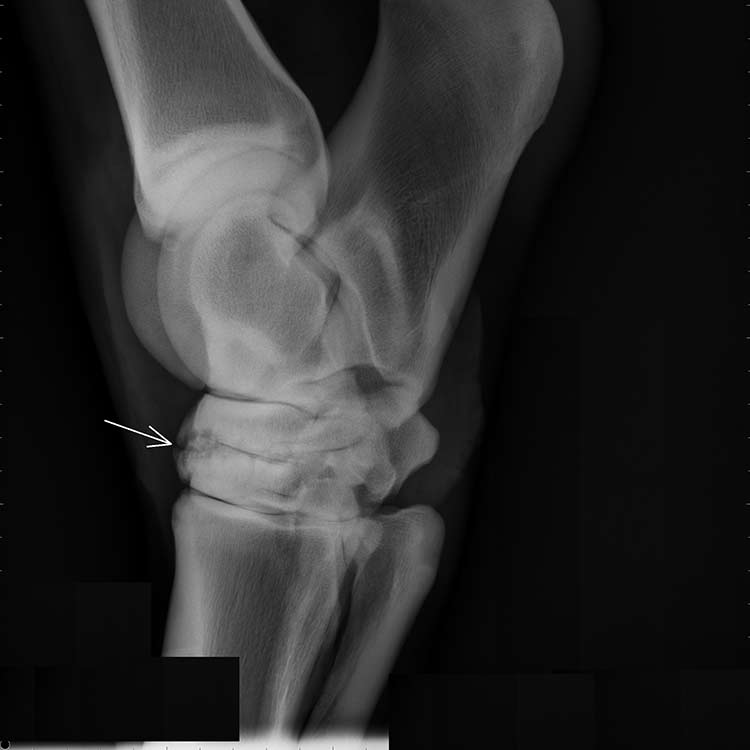
Treating equine bone spavin
Monday, January 7, 2019
Equine athletes — those beautiful horses who compete in races, rodeos and other events — can suffer any number of medical issues. One common affliction that causes lameness in these animals is bone spavin, or degenerative joint disease. Arising from various factors, bone spavin destroys the joint cartilage in the bottom two joints of the hock.
Enzymes and biochemical agents from the joint lining are released inside the joint on a regular basis, destroying the cartilage, triggering tissue inflammation, pain, and reduced range of motion. As the joint cartilage erodes, the bones of the joint begin to grind against each other, resulting in further disability and pain. Signs of bone spavin vary according to the severity of the disease and could include:
- Lameness
- Joint swelling that lasts for more than two weeks
- Excessive synovial fluid
- Persistent pain or stiffness around the joint
- Pain when the hock is flexed
- Heat around the joints
- Unusual stiffness following periods of inactivity, such as prolonged standing
- Popping or cracking of joints upon use
- Decreased performance or inability to easily perform usual training activities
A thorough lameness exam, coupled with the horse’s history, aids in making a diagnosis. Ultimately, radiographs of the affected joints can confirm bone spavin.
The type of treatment depends on the severity of the disease and the anticipated future use of the horse.
Limits on activity, adequate rest and the use of ice packs may reduce acute mild inflammation and swelling. For more severe, established cases of bone spavin, analgesics, anti-inflammatory medications, exercise management and even surgery may be required.
Typically, analgesics and anti-inflammatory medications alleviate pain but don’t improve the condition or prevent further damage. That’s why they should only be used in addition to such lifestyle modifications as dietary management, adequate rest, proper shoeing and careful exercise management to reduce joint damage from overuse. This is particularly important in young horses.
Oral and injectable medications can be used in treatment. Intra-articular injections, such as corticosteroids, are the best way to treat chronic cases. Intra-articular corticosteroids reduce inflammation within and around the joint, reducing pain and providing greater mobility. Continuous relief may require a number of injections.
Joint fusion surgery may alleviate pain and increase soundness for severe chronic cases.
In the majority of cases, the prognosis is good with treatment, especially for less severe cases.
A horse’s risk of developing bone spavin increases with age, conformation anomalies (cow hocked or sickle hocked), performance demand/workload and genetic predispositions towards defective joint or cartilage physiology. A single traumatic incident can result in bone spavin, or it may take years of stress to the joints to result in bone spavin.
Heavier breeds and obese horses may be more prone to the condition. Repeated injury and stress on the joints can further damage the cartilage. Improper shoeing and continual exposure to areas with poor footing may also exacerbate the condition.
Prevention or reduction of the onset of severely debilitating bone spavin is dependent on early detection and good management.
Veterinary Viewpoints is provided by the faculty of the OSU Veterinary Medical Hospital. The hospital has an Avian, Exotics and Zoo Medicine Service staffed to care for pet birds. Certified by the American Animal Hospital Association, the hospital is open to the public providing routine and specialized care for all species and 24-hour emergency care 365 days a year.
